If you’re concerned with your child’s mouth breathing, or that his or her thumbsucking habit may have caused some trouble swallowing or speaking, your Google searches might have led you to an approach called Orofacial Myofunctional Therapy.
Orofacial Myofunctional Therapy (OMT) is a type of therapy that certain Speech-Language Pathologists (also known as Speech Therapists) specialize in.
OMT can help children with Orofacial myofunctional disorders, such as Tongue Thrusting, to eat, breath, or talk more efficiently.
How do you know if your child could benefit from Speech Therapy that incorporates OMT? Here are more details on what Orofacial myofunctional disorders are, potential causes, and how Orofacial Myofunctional Therapy can improve speech and feeding skills for certain children.
What are Orofacial Myofunctional Disorders?
In order to properly speak, breath, and swallow, the muscles in our face, mouth, and throat need to be structured in the correct position and coordinate as they move together.
Orofacial myofunctional disorders (OMDs), according to the American Speech-Language and Hearing Association, are “patterns involving oral and orofacial musculature that interfere with normal growth, development, or function of orofacial structures, or call attention to themselves.”
Here are a few examples of Orofacial Myofunctional Disorders:
- Tongue thrust (tongue between the teeth while swallowing)
- Mouth breathing (lips apart/mouth open at rest)
- Jaw malocclusions (such as an overbite, underbite, or open bite)
- Tongue tie
- Lip tie
OMDs can be caused by a combination of a physical difference in the structure of the mouth/facial muscles and patterns of behaviors over time.
Causes include:
- Genetics
- Orthodontic issues
- Thumb or finger sucking
- Prolonged use of sippy cups/pacifiers
- Structural abnormalities
- Neurological disorders
- Obstructed nasal passages (for example, due to enlarged tonsils or adenoids, or allergies), causing the tongue to be in an improper position.
Signs of Orofacial Myofunctional Disorders
What are some signs that a child may have an Orofacial Myofunctional Disorder?
He or she may have trouble with speech, swallowing, or breathing. More specifically, some signs and symptoms of OMDs include:
- Speech articulation difficulties (such as lisp, where the child produces the “S” and “Z” sounds with his or her tongue forward and between the teeth).
- Drooling or an open-mouth posture.
- Disordered sleep (such as Obstructive Sleep Apnea) or sleep disordered breathing (such as snoring).
- Difficulty swallowing with the lips closed.
How Orofacial Myofunctional Therapy can Help
If you have concerns that your child may show signs of an Orofacial Myofunctional Disorder, your child’s pediatrician may recommend that you start by having him or her evaluated by an Ear, Nose and Throat doctor, or ENT.
An ENT can help rule out or correct structural or physiological abnormalities. Sometimes, an ENT will recommend that the child’s tonsils or adenoids be removed.
Enlarged tonsils or adenoids may have led to the tongue pushing forward in the mouth over time, causing an OMD. If this was the case, after an adenoidectomy, an ENT may recommend that your child be evaluated by a Speech Therapist.
The Speech Therapist can use Orofacial Myofunctional Therapy (OMT) to help encourage a correct tongue resting position and any speech or swallowing issues that might have developed as a result of the OMD. Here are some ways that OMT can help.
#1: Oral Muscle Exercises
A Speech Therapist may work with your child, for example, on holding their tongue tip behind their top teeth as an exercise. This can encourage your child to stop his or her tongue from resting more forward in their mouth.
#2: Create a Lips-Together Mouth Posture
A Speech Therapist using OMT may help your child improve his or her ability to keep their lips together.
For this, Speech Therapy might include an exercise where your child holds a tongue depressor vertically between their lips for a given number of seconds. That can help improve the child’s lip strength and coordination, and differentiate it from other mouth muscles like the tongue.
#3: Stop Pacifier or Thumb Sucking
If your child has an Orofacial Myofunctional Disorder as a result of thumb sucking or a prolonged pacifier use, a Speech Therapist may recommend you work on nixing the habit as part of the OMT program.
“Non Nutritive sucking” habits like these put your child at risk for malocclusions – abnormal positioning of the teeth and jaw. For example, an open bite, where the top and bottom teeth do not line up properly and instead, there is a gap between them in the front.
So if you’ve been trying to stop your child’s thumb sucking habit, a Speech Therapist can help by giving you tips such as providing your child with positive reinforcement for other, desired behaviors.
#4: Improve Articulation of Speech Sounds
Some children who have OMDs have trouble articulating certain speech sounds correctly, like the “S”, “Z”, and “SH” sounds.
Orofacial Myofunctional Therapy, used in Speech Therapy, can help teach children to maintain their tongue in the proper “resting position” (behind the teeth, with the mouth closed).
That, along with articulation therapy, may improve how clear your child’s speech is.
#5: Help with Swallowing
In OMT, a Speech Therapist can help modify the textures or thickness or foods and drinks to help a child with an Orofacial Myofunctional Disorder to be able to properly swallow.
The therapist might recommend your child use certain tools, such as straws, to improve tongue strength and separate positioning from other muscles in the mouth.
Frequently Asked Questions About Myfunctional Therapy
What is orofacial myfunctional therapy?
Orofacial myofunctional disorders (OMDs), according to the American Speech-Language and Hearing Association, are
patterns involving oral and orofacial musculature that interfere with normal growth, development, or function of orofacial structures, or call attention to themselves.”
Orofacial myofunctional therapy, conducted by a speech language pathologist, is the process of remediating these atypical patterns.
Does Myfunctional Therapy Work:
Orofacial Myofunctional therapy has proven to be effective in treating the underlying cause of speech articulation errors. Speech Language Pathologists with orofacial myofunctional training work to remediate the atypical patterns that contribute to disordered articulation.
How does myofunctional therapy help the airway?
In order to properly speak, breath, and swallow, the muscles in our face, mouth, and throat need to be structured in the correct position and coordinate as they move together. Through myofunctional therapy, the speech language pathologist will work to improve patterns and positioning and thus breathing, speech and swallowing.
Why is it critical to address all oral habits before starting myofunctional therapy?
If your child has an Orofacial Myofunctional Disorder as a result of thumb sucking or a prolonged pacifier use, a Speech Therapist may recommend you work on nixing the habit as part of the OMT program.
“Non Nutritive sucking” habits like these put your child at risk for malocclusions – abnormal positioning of the teeth and jaw. For example, an open bite, where the top and bottom teeth do not line up properly and instead, there is a gap between them in the front.
Is Orofacial Myofunctional Therapy covered by insurance?
Orofacial myofunctional therapy is frequently covered by insurance. Reach out to your insurance company to inquire whether speech language pathology services are covered, under your plan, for your area of need.
Who can provide orofacial myofunctional therapy?
Orofacial Myofunctional therapy should be provided by a licensed speech language pathologist.
How to Get Started
If you or your child’s pediatrician have concerns that he or she may have an Orofacial Myofunctional Disorder, consider starting Orofacial Myofunctional Therapy with a Speech-Language Pathologist.
TherapyWorks offers Speech Therapy with Speech-Language Pathologists experienced in OMT. TherapyWorks offers Speech Therapy, Occupational and Physical Therapy both in person and through teletherapy (nationwide). If you would like to learn more, or discuss your child’s specific needs, please don’t hesitate to reach out to TherapyWorks!








